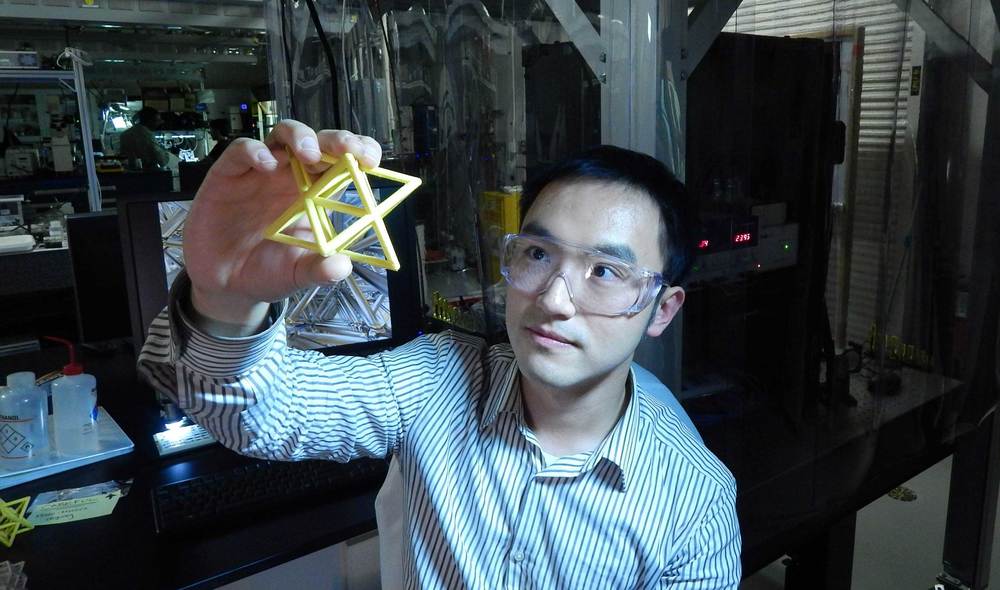Dogs and cats don’t see as clearly as humans—and they’re lacking in the color department—but they can see movement much better than we can.


Circa 2011
This National Geographic honey badger video, with a hilarious voiceover from “Randall,” went viral a few months ago. Seriously, though, why can the honey badger wake up from a cobra bite and be on his merry way? And why can it get stung repeatedly by a swarm of bees and “not give a shit?”


Circa 2017
Imagine materials strong enough to use in building airplanes or motor cars, yet are literally lighter than air. Soon, that may not be so hard to do because a team of researchers from MIT and Lawrence Livermore National Laboratory (LLNL) have developed new ultra-lightweight materials that are as light as aerogel, but 10,000 times stiffer, and may one day revolutionize aerospace and automotive designs.
Aerogels are incredibly light, so light that the record holder, aerographene, boasts a density of just 0.16 mg/cm3. Currently, aerogels are used for insulation, tennis racquets, as a means of controlling oil spills, and were used on the NASA Stardust mission to collect samples from a comet’s tail. Unfortunately, despite its seemingly ephemeral nature, its very much a solid and will shatter if pressed hard enough, so its use is limited.
The new materials developed by the MIT/LLNL team aren’t aerogels, but are metamaterials. That is, artificial materials with properties that aren’t found in nature. The idea is to structure it, so that it has the lightness of aerogel, but is much stronger. The strength of the new materials comes from their geometric structure, not their chemical composition.

In a step closer to skyscrapers that serve as power sources, a team led by University of Michigan researchers has set a new efficiency record for color-neutral, transparent solar cells.
The team achieved 8.1% efficiency and 43.3% transparency with an organic, or carbon-based, design rather than conventional silicon. While the cells have a slight green tint, they are much more like the gray of sunglasses and automobile windows.
“Windows, which are on the face of every building, are an ideal location for organic solar cells because they offer something silicon can’t, which is a combination of very high efficiency and very high visible transparency,” said Stephen Forrest, the Peter A. Franken Distinguished University Professor of Engineering and Paul G. Goebel Professor of Engineering, who led the research.
Denis Shiryaev uses algorithms to colorize and sharpen old movies, bumping them up to a smooth 60 frames per second. The result is a stunning glimpse at the past.


The Defense Department expects to stand up its first battalion of Stryker vehicles outfitted with high-powered laser weapons by some time next year, Army officials say.
“Expect to have the first battalion fielded in 2021 with four battalions by 2023,” U.S. Army Space and Missile Defense Command chief Lt. Gen. Dan Karbler told the audience at the virtual Space Missile Defense symposium on Tuesday.
The so-called “laser battalion,” as Defense One described it, would eventually deploy the new 50 kw Directed Energy-Maneuver Short-Range Air Defense (DE-MSHORAD) Stryker that the Army is working to field by 2022, a ten-fold power increase over the 5 kw-class system that artillery soldiers have been testing in Germany since early 2018.
Gertrude the pig is a prototype of a brain-to-machine interface.
Quick recap of Neuralink’s update event.
Han from WrySci HX goes over the main points of Elon Musk’s Neuralink Presentation. More below ↓↓↓
Support 🙏
Patreon: https://www.patreon.com/wrysci_hx
OnlyFans: https://onlyfans.com/han_xavier
Neuralink Primer Video: https://www.youtube.com/watch?v=tXS8r7ITD7I
Openwater Video: https://www.youtube.com/watch?v=oRyj8EoDEzI